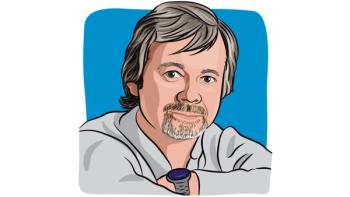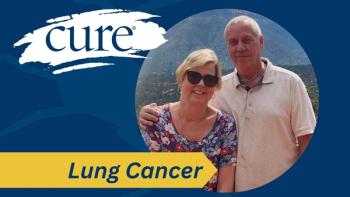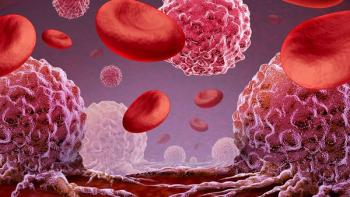
Top Breast and Ovarian Cancer Research Findings for the Past Year
CURE editor-in-chief and breast oncologist, Debu Tripathy, reviews the top breast cancer research highlights from 2014.
A new standard that recommends ovarian function suppression (OFS) therapy as a routine adjuvant treatment option for certain premenopausal women with higher risk, hormone receptor (HR)—positive breast cancer emerged as the most far-reaching medical oncology research finding in the field for 2014, according to Debu Tripathy, editor-in-chief of CURE and chair of the Department of Breast Medical Oncology at MD Anderson Cancer Center in Houston.
Other noteworthy developments emanated from negative clinical trials and an early immunotherapy study. These findings are among the 2014 highlights that Tripathy reviewed in an overview that was the annual feature of the Miami Breast Cancer Conference held in late February. Tripathy also serves as one of the directors of the conference.
In all, Tripathy selected 12 abstracts from the 2014 American Society of Clinical Oncology (ASCO) annual meeting in June and the 2014 San Antonio Breast Cancer Symposium (SABCS) in December to focus upon during his presentation.
SOFT Trial Maps New Option
The findings with the most practice-changing potential are the SOFT trial results reported at SABCS, Tripathy said in an interview in advance of his presentation. For the past 15 years, tamoxifen has been the standard adjuvant hormonal treatment after surgery for premenopausal patients with HR-positive early breast cancer, and guidelines tend to recommend against routinely adding OFS therapy.
The SOFT investigators were seeking to determine whether adding OFS therapy to five years of either tamoxifen or exemestane reduced the risk of recurrence compared with tamoxifen alone for women with HR-positive breast cancer who either were premenopausal or remained so after receiving chemotherapy. OFS was achieved by choice of monthly injections of the gonadotropin-releasing hormonal agonist triptorelin, bilateral oophorectomy or bilateral ovarian irradiation; 80.7 percent of those assigned to OFS during the trial received triptorelin.
Overall, the addition of OFS therapy did not result in a statistically significant advantage in disease-free survival (DFS) when outcomes for the more than 3,000 women who participated in the trial were compared in the primary analysis for tamoxifen plus OFS versus tamoxifen alone. At a median follow-up of 5.6 years, the addition of OFS to tamoxifen resulted in a DFS rate of 86.6 percent compared with 84.7 percent for tamoxifen alone.
In subset analyses, however, more robust differences emerged. For participants who were premenopausal after prior chemotherapy (average age of 40 years), OFS therapy reduced the risk of recurrence by 22 percent when added to tamoxifen and by 35 percent when combined with exemestane.
Among the 350 women older than 35 in the overall study population, 94 percent of whom had received chemotherapy, the five-year DFS rates were 83.4 percent, 78.9 percent and 67.7 percent, respectively, for patients treated with exemestane plus OFS, tamoxifen plus OFS, and tamoxifen alone.
“The patients who seemed to benefit not only from the addition of ovarian blockade but also from the use of an aromatase inhibitor instead of tamoxifen were patients who had positive nodes, patients who received chemotherapy, and patients who were under the age of 35,” noted Tripathy. “All of these subgroups, essentially, were higher-risk patients.
“Now, it’s always difficult to interpret a study and make recommendations based on such subset analyses,” he continued. “But these findings have been shown in other studies of smaller size that have ovarian ablation as an additional therapy, particularly for younger patients under the age of 35.”
As a result, Tripathy said, “ovarian suppression with an aromatase inhibitor may actually be the preferred therapy” for patients who are node-positive, getting chemotherapy, are premenopausal and remain premenopausal, and for patients under the age of 35. In contrast, patients not receiving chemotherapy had excellent outcomes with tamoxifen alone, with 98.6 percent remaining free of recurrence and 99.2 percent alive at five years.
The decision should still be made on a case-by-case basis, he added, noting that OFS therapy comes with more side effects. The most common adverse events of all grades for patients who received tamoxifen plus OFS compared with tamoxifen alone were hot flashes, depression, sweating and insomnia.
Compelling Signals from Negative Trials
Tripathy’s list of noteworthy studies includes two trials in which researchers did not obtain the desired outcomes: (1) the ALTTO trial that examined the addition of Tykerb (lapatinib) to Herceptin (trastuzumab) for the adjuvant treatment of women with early breast cancer; and (2) the FERGI study that evaluated the novel PI3K inhibitor pictilisib in estrogen receptor—positive metastatic breast cancer resistant to aromatase inhibitor therapy.
The phase 3 ALTTO trial, which enrolled more than 8,000 women in 44 countries, demonstrated that treatment with Tykerb plus Herceptin, either sequentially or concurrently, was associated with a high DFS rate but that combining the drugs did not produce a statistically significant advantage over Herceptin alone. All patients also received chemotherapy.
At a median follow-up of 4.5 years, the DFS rates were 86 percent for patients who received Herceptin alone; 88 percent for participants treated with Herceptin and Tykerb concurrently; and 87 percent for patients who received Herceptin followed by Tykerb.
The results proved to be a disappointment after the NeoALTTO study, released in December 2013, showed a higher pathological compete response with the combination.
“We were all very excited by the neoadjuvant data where the pathological response rate was significantly improved with the addition of lapatinib to trastuzumab, given with chemotherapy,” said Tripathy. “We assumed that this would translate into an improvement when we tested this combination in the adjuvant setting.”
“Now this raises the whole question as to whether this neoadjuvant model is helpful to us in predicting what regimens are going to be successful in the adjuvant setting,” added Tripathy. “So that was an important abstract. This also confirms the need to analyze neoadjuvant results in the context of defined biological subsets.”
In the phase 2 FERGI trial, the combination of pictilisib plus fulvestrant did not demonstrate a statistically significant improvement in median progression-free survival (PFS) compared with fulvestrant alone (6.6 months versus 5.1 months, respectively). Although aberrations in the PI3K pathway are frequently observed in ER-positive breast cancer, PIK3CA mutation status had no effect on PFS among participants in the trial. However, there was evidence of antitumor activity in a subset of patients with ER-positive, progesterone receptor—negative disease; the PFS for this group was 7.4 months in the combination arm versus 3.7 months with fulvestrant alone.
“We need to understand a little bit better how these drugs work as we figure out how to develop them in the clinic,” commented Tripathy.
PD-1 Buzz Hits Breast Cancer
The PD-1 antibody Keytruda (pembrolizumab), which gained approval last year in metastatic melanoma and has been designated as a breakthrough therapy in non—small cell lung cancer, demonstrated that the immune checkpoint blockade strategy of targeting PD-1 may have a place in breast cancer treatment.
In the KEYNOTE-012 study, Keytruda demonstrated an 18.5 percent overall response rate among patients with metastatic triple-negative breast cancer whose tumors tested positive for expression of the PD-1 ligand, PD-L1. Participants in the phase 1B trial had been heavily pretreated, with 21.9 percent having received at least five lines of therapy. Additionally, 87.5 percent of patients had received neoadjuvant or adjuvant therapy.
“We know that patients who have triple-negative cancers do seem to have a higher immunogenicity,” said Tripathy. “These tumors are more active and visible by the immune system—possibly because they tend to carry more mutations and therefore have altered epitopes that are more immunogenic. So the newer generation of so-called checkpoints that augment the immune system may be particularly active in triple-negative cancers, which is an area where there is a great unmet need.
“This is really the first demonstration of any single biologic agent that we have today with activity in triple-negative breast cancers, and the first immunotherapy to show this kind of effect,” Tripathy said.





